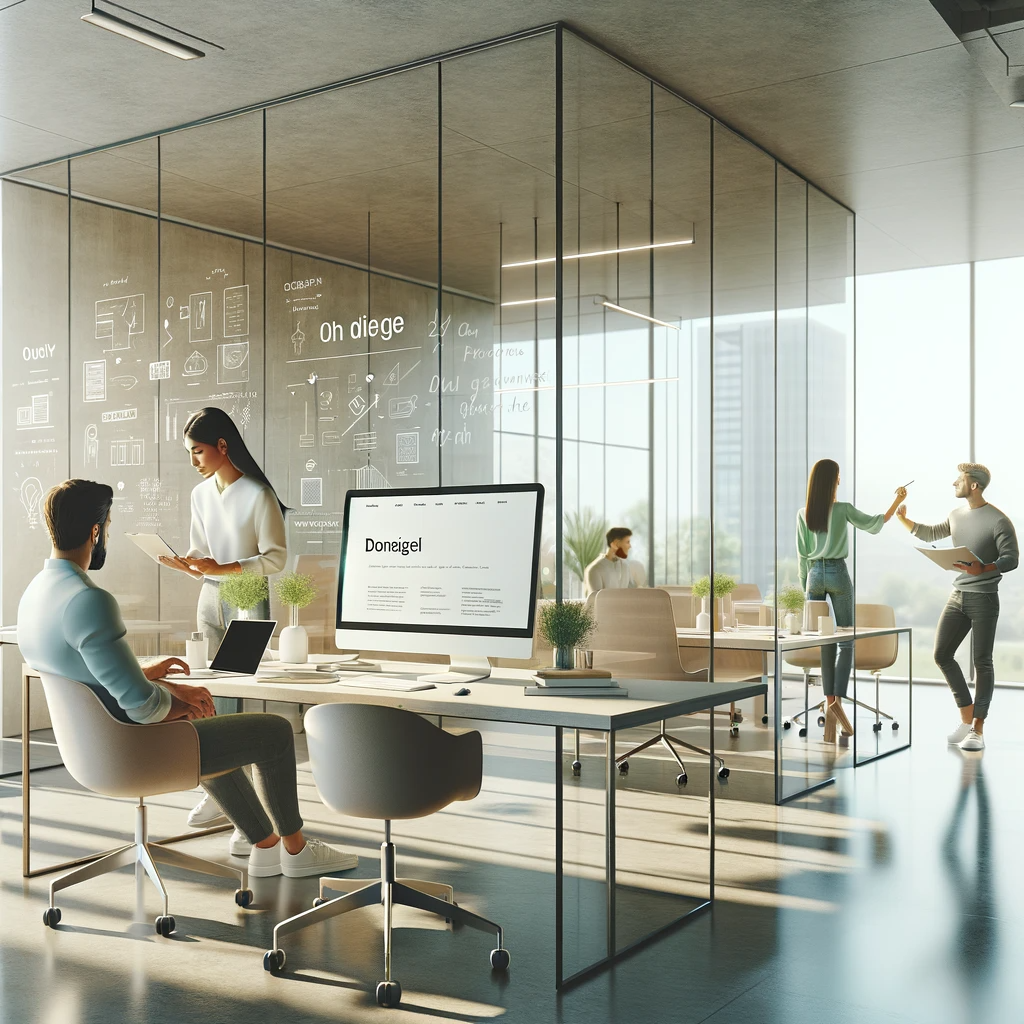WHAT IS WEBSITE UPDATING?
Website updating is the process of making changes to its operation. It’s about improving the appearance or functionality. New doesn’t always mean rebuilding from scratch. Sometimes it’s modernizing existing elements.
The essence of updating a web resource is not just about visually reworking the design. It’s about enhancing functionality and technical features. The process might include optimizing the CMS for more efficient operation or improving the user interface for better interaction with the site. It’s also about adapting to new trends and standards in web design. Understanding what “website updating” means is vital for effective planning and implementing these changes. And it’s important to do this with minimal losses to your current activities and website traffic.
WHY UPDATE A WEBSITE?
- To ensure the site operates steadily.
- To eliminate vulnerabilities.
- To meet current technical standards.
- To utilize modern functionalities.
- To adapt to the latest trends.
Updating is crucial to keep your resource relevant. It involves technical optimization, enhancing user experience, and meeting the current business needs.
In general, website updating is about refining your site. It’s all for maximum adaptation to your audience’s requests and expectations. And also for search engines. Remember, apart from users, you can’t ignore the “wishes” of search algorithms. This ensures stable and high website traffic.
WHEN DOES A WEBSITE NEED UPDATING?
- If the business focus has changed.
- If the company’s software has been updated.
- If the site isn’t mobile-friendly.
- If the site is slow.
- If it’s user-unfriendly.
There can be many reasons to update: outdated design, changing business goals, or technical issues. The time for updating comes when your current site no longer meets your needs. Also, an update is necessary if the site isn’t relevant to your audience anymore.
WHAT TYPES OF WEBSITE UPDATING ARE THERE?
- Technical update
A technical update focuses on the internal components of your website. It may include optimizing loading speed, improving security, and integrating new plugins or modules. The main goal is to enhance the site’s internal processes for more stable and efficient functioning. In the dynamic world of IT technologies, updates are key to ensuring the reliability and competitiveness of a site.
- Visual update
A visual update involves redesigning the site’s appearance, implementing modern visual solutions, and adapting to current web design trends. This could include changing the color palette, fonts, layout structure, and other elements, impacting how visitors perceive your site. A modern, stylish, and user-friendly design improves brand perception and can lead to increased sales.
- Functional update
Functional updating focuses on expanding or improving the website’s capabilities. This might be related to introducing new user interaction tools, optimizing navigation, or adding new useful features. This stage is important for meeting the growing needs and expectations of users, providing them with a convenient and intuitive user interface.
- Content update
Content updating involves reviewing and refreshing the information on your site. It’s crucial to regularly update textual and multimedia materials, adding relevant content that reflects the current state of your business and provides users with fresh and useful information. Effective content updating also helps improve the site’s search engine rankings due to the freshness and relevance of the provided data.
In some cases, it might be one of the above, and sometimes it’s a combination.
…Website updating can include various aspects, from minor technical changes to a complete overhaul of design and functionality. Sometimes it might be simple content optimization, other times a full modernization of the resource. Each type of update plays its role in ensuring high performance and relevance of the site. Combining all these approaches helps create a modern, functional, and sought-after web resource that effectively addresses your business’s objectives and attracts the audience.
WHO TO TRUST WITH WEBSITE UPDATING?
- Professionals
A professional web studio or a team of specialists is the ideal choice for website updating. They possess up-to-date skills in design, technical support, and SEO optimization. A company specializing in such tasks will provide you with quality and efficient service. Professional web developers and designers know how to approach the updating process, considering the latest trends and technological standards. They can swiftly and effectively implement technical updates, optimize for SEO, improve the user interface, and even create a new modern design that aligns with your brand.
- Update without assistanceting
If you have basic skills in web development and design, this could be a cost-effective option. However, remember that updating the website on your own requires time and patience. Skills such as working with CMS, knowledge of HTML and CSS basics, and an understanding of SEO fundamentals are necessary. By doing it yourself, you also take responsibility for any potential issues or errors.
This decision can give you full control over every aspect of the update, allowing you to meticulously adapt each site element to your needs and preferences. However, despite the potential cost savings, you also risk spending significant time that could be used to develop your business in other areas.
HOW DOES WEBSITE UPDATING IMPACT SEARCH ENGINE RESULTS?
- Positive impact
With the right approach, website updating can significantly boost your site’s positions in search engine results. Here are key points to note:
Technical Optimization: Improving the technical aspects of your site lays the foundation for better search positions. This includes increasing loading speed, fixing code errors, optimizing site structure, and enhancing design adaptability for different devices. Search engines highly value technically optimized sites. Result: higher positions in search results.
Content Optimization: Modern content updating involves more than just visual enhancements. It’s about refining texts, images, and multimedia. Also, using keywords, creating quality and useful materials, optimizing images and videos. All these are aimed at improving your site’s visibility in search engines.
- Negative impact
It’s important to remember that improper updating can also have negative outcomes.
Site functionality issues: If the update hasn’t been thoroughly tested, technical problems can arise. For example: broken links, 404 errors, issues with image loading, etc. This negatively impacts the user experience and the site’s reputation in the eyes of search engines.
Loss of SEO parameters: If URL addresses or site structure changes without appropriate 301 redirects, valuable traffic might be lost. This disrupts established connections between pages and negatively affects positions in search results.
Considering the points above, key is thorough planning and a comprehensive approach to website updating. Engaging professionals in various fields (SEO, design, development) can help minimize risks and ensure that the update will benefit your business, improving your web resource’s positions in search engine results.
CONCLUSION
Update your website, boost your business. Give users a great experience. Stand out in the market. Changes can be small or big. But all lead to growth. Need help? Our SiteDesign pros are here for you.



















